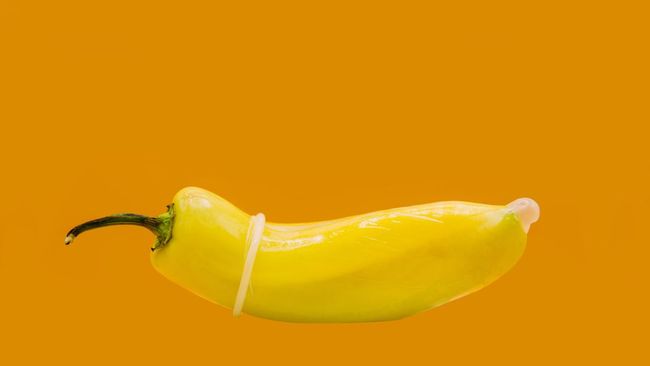Some Swedish media outlets had earlier published the names of the winners in advance, after accidentally receiving a press release from the Swedish Academy of Sciences at dawn on Wednesday. “We are investigating, we don’t understand how it could have happened and we are very sorry” the Academy scientists apologised.
The news already reported the names of Moungi Bawendi del Massachusetts Institute of Technology (Mit), Louis Brus of Columbia University and Alexei EkimovRussian physicist who worked at the Vavilov State Institute of Optics before moving to the United States to work at the Nanocrystals Technology company.
It is not certain that Ekimov will be invited to the awards ceremony on December 10, due to his nationality. “We deal with the choice of the best scientists, we don’t deal with the invitations” the Academy of Sciences raised its hands.
The three scientists were chosen “for the discovery and synthesis of quantum dots”, which would represent “an important seed for nanotechnology”.
Quantum dots and their colors
Quantum dots are nanocrystals of semiconductor materials, generally between 2 and 10 nanometers (millionths of a millimeter) in size, equal to the diameter of a few atoms placed side by side. Quantum dots are so small that their characteristics depend on their size.
“Some of their properties are really unusual and fascinating. For example, their color changes depending on their size,” explained Johan Åqvist, secretary of the Nobel Committee for Chemistry. To understand their size, it helps to think about the relationship between planet Earth and a balloon. The same proportion exists between a balloon and a quantum dot.
The dimensions of a quantum dot are to those of a balloon as the balloon is to the Earth
The motivation for the award is that “quantum dots are particles with unique properties. Already today they spread their light from television screens and LED lamps. They function as catalysts in chemical reactions and their light can illuminate tumor tissue before a surgeon’s eyes.” While Brus and Ekimov described the existence of quantum dots, Bawendi worked on perfecting their production, which requires extreme precision.
In the future, predict the experts at the Swedish Academy of Sciences who chose the winners, quantum dots could contribute to flexible electronics, tiny sensors, thinner solar cells and encrypted quantum communications.
Bawendi was born in Paris 62 years ago to a family of Tunisian origin. Brus is American and 80 years old. Ekimov was born in the Soviet Union 78 years ago.
The Nobel Prize winners of the past
The winners of the Nobel Prize for Medicine on Monday were the Hungarian Katalin Kariko 68 years old and American Drew Weissman of 64, who developed the RNA method used for vaccines against Covid. “Thanks to them, millions of lives have been saved and the world has reopened” is the motivation of the Nobel Assembly which awarded the prize. Their work has allowed us to overcome “one of the worst threats to human health of modern times”.
The Nobel Prize for Physics went to Tuesday Pierre AgostiniFrench, working at Ohio University, Ferenc Krausz61 years old, Austrian-Hungarian, at the Max Planck Institute of the University of Munich and Anne L’Huillier, 64 years old, French-Swedish, at Lund University (Sweden). To capture the way the electrons move, the three scientists “chased” them with very short pulses of light, the shortest ever created by man, measurable inattoseconds. An attisecond is one trillionth of a second.
Last year the prize for chemistry went to Carolyn Bertozzi, Morten Meldal e Barry Sharpless “for the development of a new method for assembling new molecules”. The technique, called “click chemistry”, allows molecules to be joined together in a simple and efficient way.
The history of the Award
The Prize was born in 1901 by will of Alfred Nobel, Swedish chemist and engineer who patented dynamite in 1867. Previously, due to an explosion, Nobel had lost his brother Emil.
In 1888, after the death of his other brother Ludvig, a French newspaper mistakenly published Alfred’s obituary: “The merchant of death is dead”. Alfred Nobel was shocked and decided to establish a prize intended “for those who had offered the greatest benefits to humanity”.
The Nobel Prize is awarded with an allowance of 11 million Swedish crowns (one million euros), to be divided among the winners. One million crowns were added this year, due to inflation and devaluation of the crown.
The banquet on December 10th in Stockholm
The winners are chosen every year by the Stockholm Nobel Committee. Its members invite a small group of experts in the field, including Nobel Prize winners from previous years, to nominate names. The Committee will then choose from within the squad. The winners will be invited to Stockholm for a sumptuous ceremony in the presence of the King of Sweden on 10 December, the anniversary of Alfred Nobel’s death in 1896.
2023-10-04 10:15:07
#Nobel #Prize #Chemistry #Bawendi #Brus #Ekimov #filled #world #nanotechnology #colours


